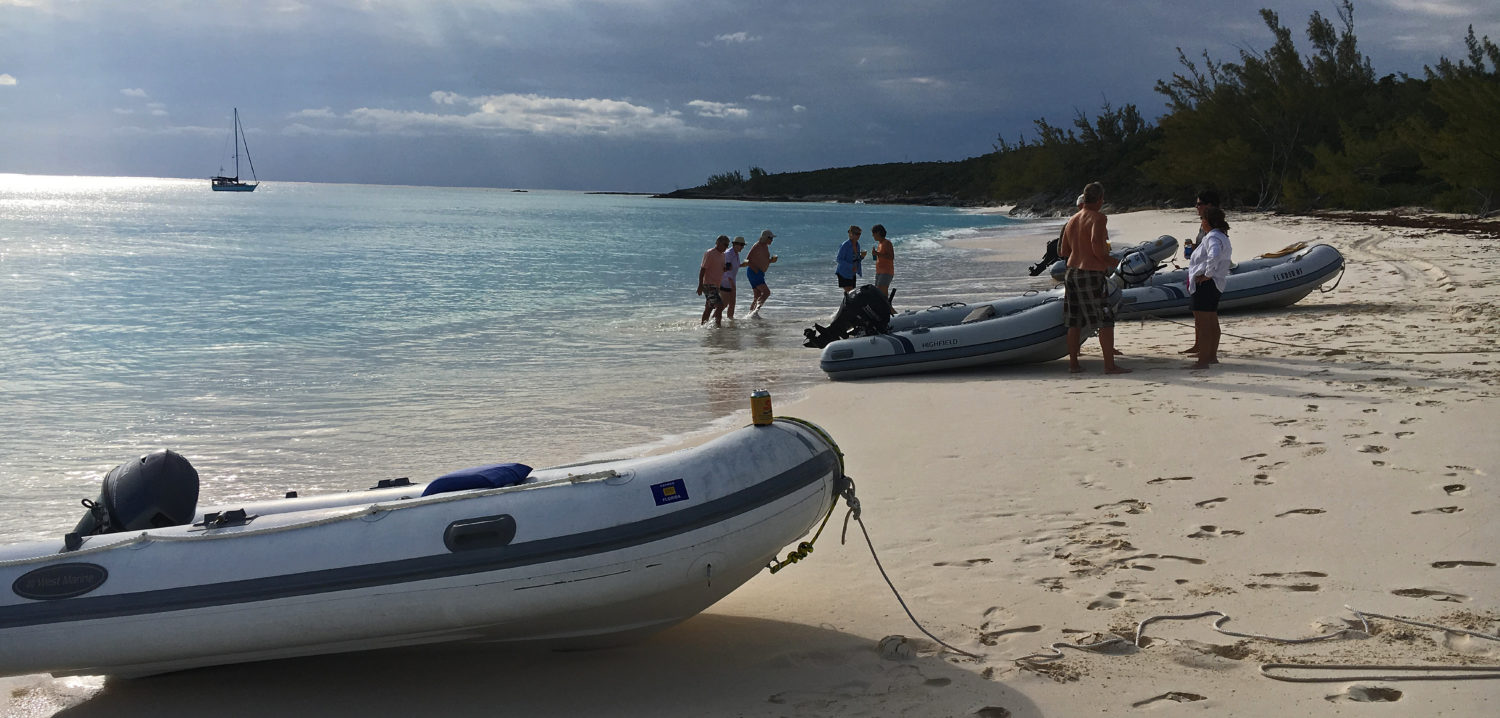We have a couple books on knots listed on our site, and occasionally we pull out a couple lengths of line to practice, but as we don’t yet own our own boat, the only time we had to put our ability to the test, so far, was with our RYA Day Skipper Course we took through Sailing School Malta.
This is one of those thing that you will wish you had paid more attention to when you need it at the worst possible time, so whenever we see something on the subject we take note. We saw this article on the Sail-World.com’s Europe site for how to tie a bowline.
Everyone has their own way once they get the hang of it, but starting out, it is sometimes hard to find a good description and/or pictures to help. These ones are pretty good with any explanation of why the author considers it important.
Hopefully it helps.
‘BowlineStepsPanel’ Captain John Jamieson Click Here to view large photo
I pulled myself up onto the boat’s whale-belly bottom, wrapped one arm around the centerboard, and waved with the other. Since I was well outside the channel proper, no one saw me. And it was getting colder by the minute. Matter of fact, I was quickly losing feeling in my submerged legs. I prayed that help would arrive soon.
Finally I saw them, riding that glorious white thoroughbred with a flaming-red racing stripe. Aye, with a bone in her teeth she was steaming dead for me! The Coasties had arrived. They came alongside and asked me how I was. ‘Hi guys, thanks for stopping by!’ was about all I could mutter between blue lips and chattering teeth.
They tossed me a hawser and I dove beneath the hull. Of course, there could only be one knot to tie around the boat’s mud-sucking spar: the bowline. They hauled me aboard and stowed me down in the warmth of the cabin to thaw. Gazing through the porthole, I saw the coxswain take a strain, and my lovely righted herself. Free at last!
The knot I used, the bowline, is the one I consider the king of knotland. And the bowline shown in the illustration is the fastest and most secure I have used aboard sail and power vessels. Grab a piece of line now and tie along with the steps and illustration below.
Use This ‘Knot-Tying’ Tip
Take a look at the illustration. Notice how we face the standing part of the line. Bowlines are tied in one of two ways: you will either face the standing part or face away from the standing part. That’s a critical point. You can tie a bowline either way, but to tie the bowline as shown, you must face the standing part of the line.
If you are tossed a line, you will face the standing part. Or, if a line comes off a fixed point like a cleat and you need to tie a bowline in the end, you can position yourself to face the standing part. (there are dozens of other ways to tie the Bowline, but I believe this is one of the easiest).
Follow these three steps along with the illustration:
1. Bitter end on top. Start the bowline as shown. Face the standing part. Hold the standing part with your non-dominant hand. With your other hand, loop the bitter end and place it on top of the standing part. Hold it in place with your palm facing down and your thumb underneath, as shown in the first illustration.
2. Twist away. Keep the line held in your non-dominant hand a bit slack (notice in the first illustration, the non-dominant hand allows slack in the standing part). With your other hand, twist your wrist away from you and at the same time, pass the bitter end under the bight to form a small loop (first and second illustration).
3. Loop around and through. Pass the bitter end around the standing part and back down into the small loop. Keep the bitter end 4 to 6 inches long. Work the slack out of the knot to help prevent it from spilling (untying) when shocked.
Practice tying this bowline until you can do so blindfolded–in five seconds or less. If you really want to test yourself and prove you’re and ‘old salt’, tie behind your back.
Sail safer this sailing season on the waters of the world–wherever you choose to sail or cruise!
by John Jamieson

![Alt_6BowlineStepsPanel[1]](https://lowflite.com/wp-content/uploads/2014/07/Alt_6BowlineStepsPanel1-300x162.jpg)
Many newbies as well as myself, have had trouble tying a bowline. As you say, there are several ways to tie one and everyone has their preference. This method was shown to me some years ago and from an student’s point of view, it clears up a lot of frustration. I found many students when asked to draw a loop will automatically draw a loop in a clockwise fashion. It has to be counter clockwise.
For right handed people;
Holding the standing in your left hand with about 1/2 meter trailing below your hand, imagine drawing the number six just below your left hand. You begin with the downward stroke and loop over (counter-clockwise). Use a couple of fingers of the left hand to gripe the intersection. Then take the end of the rope, pass it through the loop from underneath, back behind the standing part, around, and back down the loop.
I found many students will dismiss the first step and wonder why the knot fell apart.
Hi Ion. Thanks for another great/easy description. Amazing how complicated some books make it out to be. We’re now working on how to do it quickly with one hand…